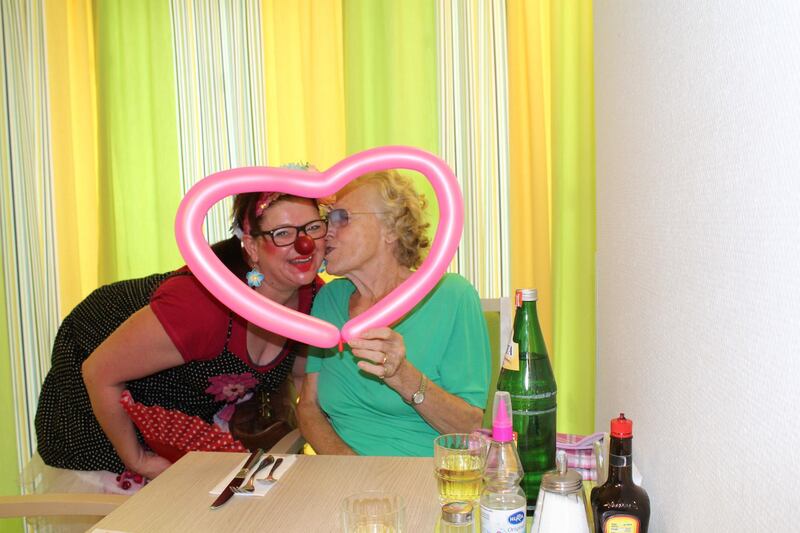Sybille Kastner was conducting an inclusive museum tour for people with dementia when a participant's comment changed her perception of a sculpture that had been on display for years. "I think she is a very nice woman, the kind I would go to if I wanted to share my feelings," the visitor said.
"Her comment moved me," says Kastner, the curator of the department of art education at Lehmbruck Museum in Duisburg, Germany. "I love the sculpture even more now and often have a quiet dialogue with it," she adds with a smile.
Another time, a person with dementia described a blue and grey German Expressionist painting of a girl as “very warm”. On being asked why, the participant noted that the hands of the painted woman appeared “very friendly and sensitive”.
"Every time we do an art reception for people with dementia at the museum, we're surprised by their comments, because they connect with the artwork emotionally," Kastner says.
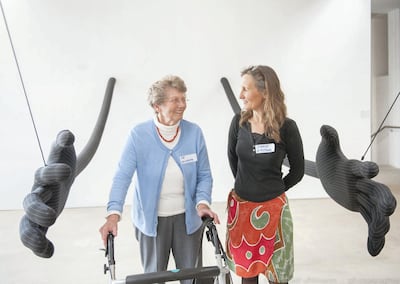
She started inclusive tours at the museum in 2007, and they now run several times a month. No more than eight people with dementia are in each group, and her audience is diverse, ranging from the "young-old" to the "old-old" and with varying abilities due to age and the condition's spectrum of severity.
Germany is estimated to be the most rapidly ageing European country. One in 20 Germans is 80 or above, and by 2050 the figure is expected to be one in six. The Socioeconomic Impact of Alzheimer's and Other Dementias, a paper by The Economist Intelligence Unit, reports that almost 10 per cent of the country's inhabitants aged 65 and up have dementia, a progressive syndrome that causes cognitive functions to deteriorate, affecting memory, comprehension, orientation, language and the capacity to learn.
The global increase in life expectancy is the single most impressive achievement of modern medicine, but with increasing longevity comes an increasing risk of Alzheimer's. Worldwide, close to 50 million people live with the disease, according to a 2017 report in British medical journal The Lancet. Dementia is likely to become the dominant illness among the elderly in the Emirates, too, with doctors noting that "Alzheimer's, a form of dementia, is going to increase by 600 per cent by 2030", with one in seven elderly people in the UAE likely to develop the illness in the next 10 years.
While there is still no cure, art intervention into everyday care can alleviate depression and apathy, and have positive effects on the mood of people living with dementia. Music, the visual arts and dance are also known to improve behaviour and increase sociability. Better language functioning, a sense of wellbeing and a higher quality of life can be achieved through such activities, reports Arts as a Medium for Care and Self-Care in Dementia, a global study from 2018.
Kastner has been able to draw in and train 11 other museums to follow in Lehmbruck's footsteps. She says the tours were inspired by the experiences of a colleague.
"Her mother had dementia and my colleague was looking for possibilities to share experiences and good times with her," Kastner says. Together, they brainstormed how the museum could become an interesting place for the elderly woman and a tour was created. "When we reached out to the local Alzheimer's society to check their interest, they said: 'This is exactly what we were looking for', and gave us our first group."
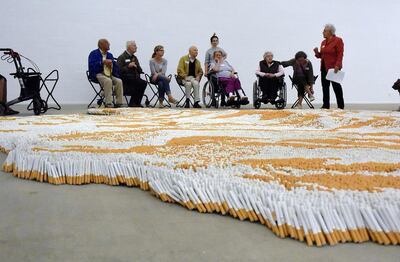
The session typically begins with a 20-minute introduction over coffee and cake. "This is how we say: 'Welcome, we're waiting for you,'" Kastner says. Because the group is never homogeneous, she tries to gauge each participant's needs. "Some talk a lot, some take a long time to find or form words and some others can't see or hear well," she says. It helps her gain an impression of who would benefit from a bit more stimulus than others during the tour.
There are no constraints on what artwork can be discussed, but the number of pieces is limited to three or four. Dates and hard-to-remember facts are avoided during the talks, leaving time for the audience to touch and explore each piece. Afterwards, Kastner asks the group how they feel about what they have seen and conversations are built.
For some, a carpet made of cigarettes sparked fond memories of meeting friends and socialising, while one woman was very sad to see the sculpture of a loving couple, as her husband had recently taken his own life. But, Kastner notes, no one ever complains about anything.
“People with dementia are used to being one step behind,” she says. “Due to memory loss, they always feel they might be doing or saying something wrong, so they remain quiet.”
Theatre performances for people with dementia
The present may be difficult to deal with, but the past is a different ballgame altogether; most patients feel comfortable when taken back in time because early memories are easier to recall. Germany's Demenzionen theatre ensemble, which performs in retirement homes for people with dementia, is based on that premise.
This summer, during one of its plays in a care home near Bonn, a very old woman in a wheelchair left the entire room laughing. She yelled "Meh, meh, meh" when the actors pointed at an imaginary goat during the performance. "For people with dementia, this kind of focus is extremely difficult to achieve, so such responses always surprise us," says Demenzionen's founder Jessica Hohn, a theatre instructor and director living in Cologne.
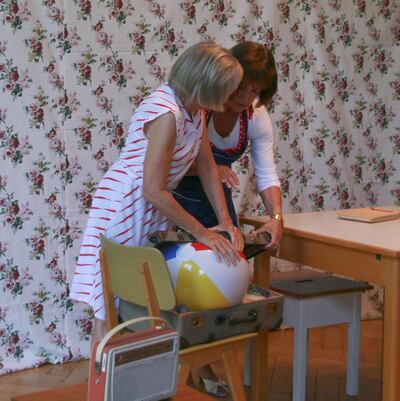
From the hardness of the cookies served to the pace of the play and the vocabulary used, Hohn works to make the performance relevant for people with dementia. "We avoid stories with layers and subplots as they can cause confusion," she says. Themes such as travel, carnivals and Christmas, which trigger memories of the past, have been used in the multisensory performances since Demenzionen was launched in 2014. Through cheerful singing, dancing, touch and movement, the actors invite the audience to engage with them during their performances
Clowning and mental health
Another set of trained professionals who work in Germany to reduce anxiety and agitation among people with dementia are clinic clowns. Wearing red noses and carrying imaginative props such as feathers, balloons, photos and musical instruments, the clowns can be seen prancing through retirement homes across the country. Several studies, including 2016's Elder-Clowning in Long-Term Dementia Care published in the Journal of the American Geriatrics Society in 2016, show that clowning can reduce moderate to severe behavioural symptoms of dementia.
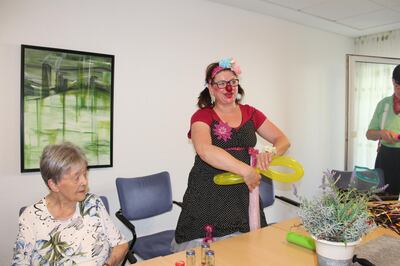
About 130 kilometres from Cologne, in the town of Arnsberg, Julia Wille, who goes by the clown name of Mia Mumpitz, is invited to care homes two to four times a month. A big Charlie Chaplin fan, she rarely plans her routine and interacts with people who have been sad or unresponsive.
"Singing is a powerful tool in clowning. I once sang to an old lady with dementia who was bedridden and had not spoken for weeks. After listening to a few lines, she started singing along with me," Wille says. "I sing, dance and use improvisation, but sometimes just a gentle touch or hug lifts moods. It's gratifying when I'm able to give them a few nice moments and help them forget they are sick."
Kastner, too, finds her work with the museum “totally enriching”, saying: “It is really wonderful to look at art without intellectual borders and be told new things about our artwork. Personally, I have learnt not to be in a hurry and to focus on what’s really important in life.”
The reporting for this story was supported by a fellowship from the Robert Bosch Foundation
